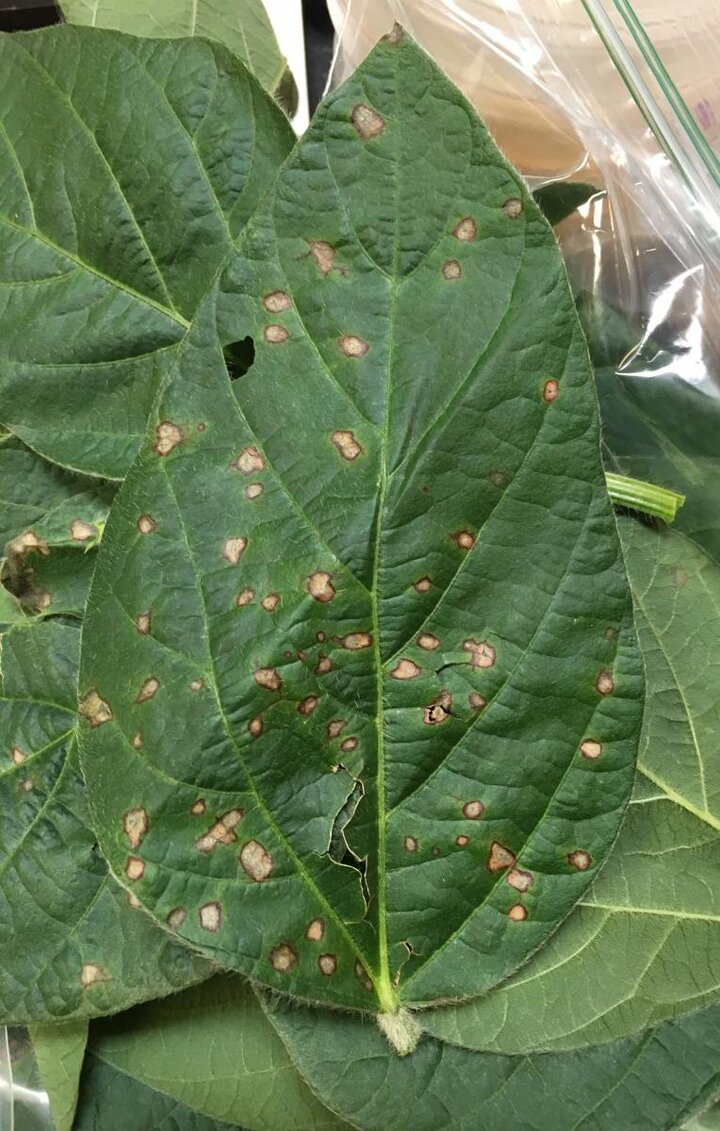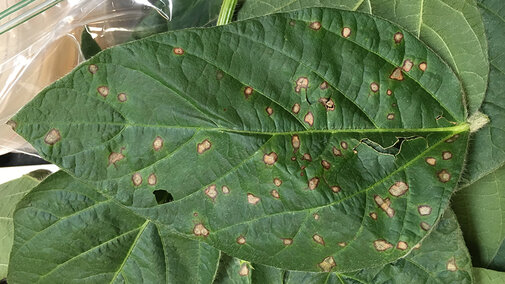Frogeye leaf spot is occurring across much of Nebraska's soybean production area. Over the past couple of years this disease has spread to the northern border of Nebraska and this year it is pretty common across the eastern third of the state. While many fields will only have minor disease development there are some with significant levels and a history that could require a fungicide application.
Symptoms
Infection can occur at any stage of soybean development, but most often occurs after flowering and is typically in the upper canopy. Initial symptoms are small, dark spots on the leaves. Spots eventually enlarge to a diameter of about ¼ inch and the centers of the lesions become gray to brown and have a reddish purple margin. Individual leaf spots can coalesce to create irregular patterns of blighting on the leaf. As the soybean leaf matures, it becomes less susceptible to infection, often confining damage to the upper canopy.
The overall best application timing for frogeye management is in the R3 to early R4 growth stages and in many fields this is now or very close. This is one of the diseases that will be controlled very well with any of the strobilurin fungicides labeled for Nebraska However, strobilurin fungicide resistance to the disease has been reported in other parts of the U.S. Make sure to use a good combination fungicide product to avoid the development of strobilurin resistance.

Future Management
This disease is residue borne and will continue to be in the field when you find it. In future years, if significant development occurs, growers should consider using resistant soybean varieties to manage the disease.
Resources
For more information on frogeye leaf spot please see:
- Video and web resources on CropWatch
- Crop Protection Network article and information on fungicide resistance.

